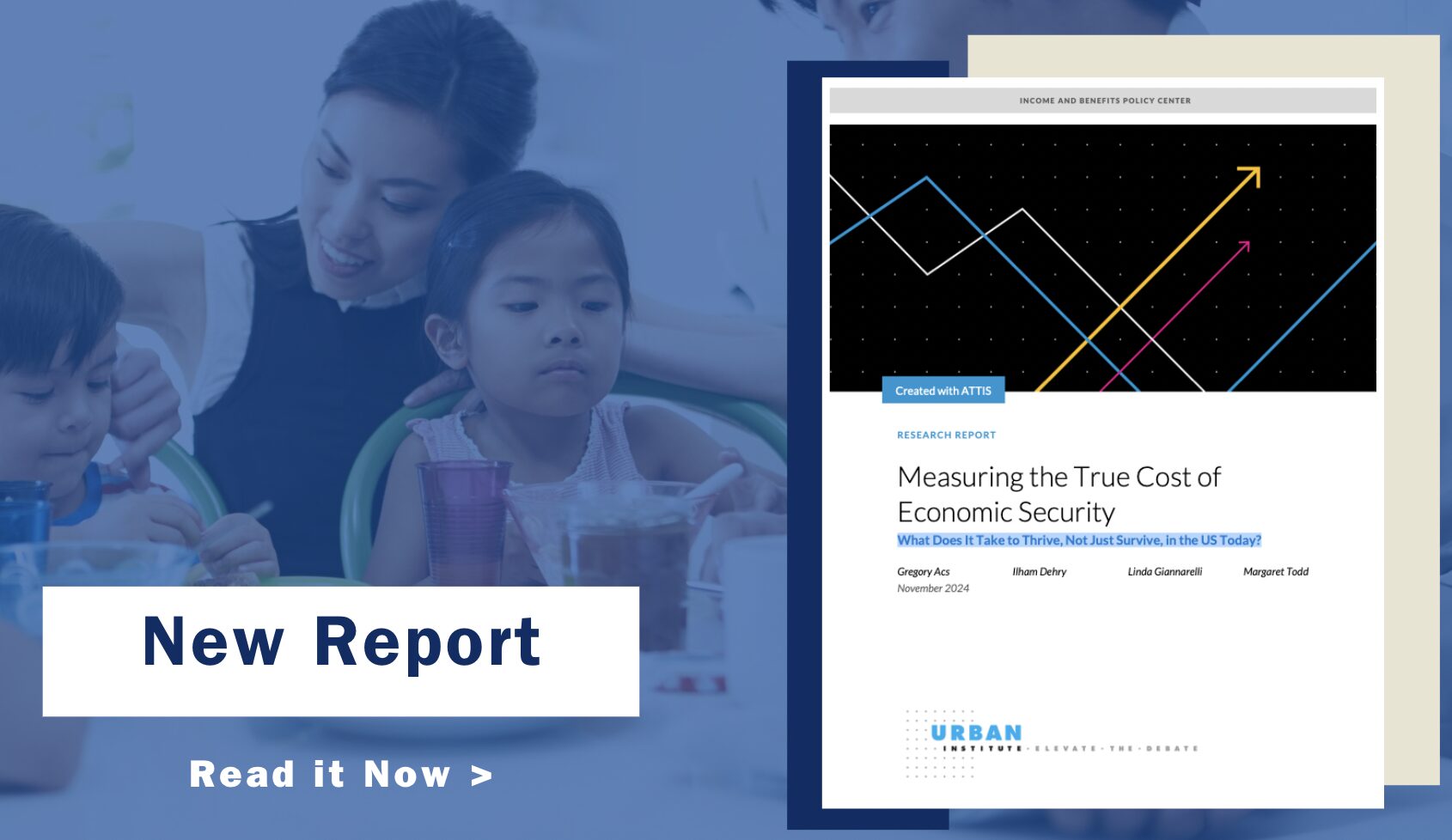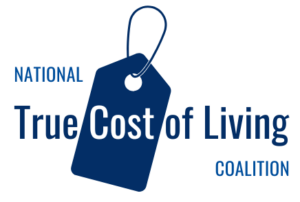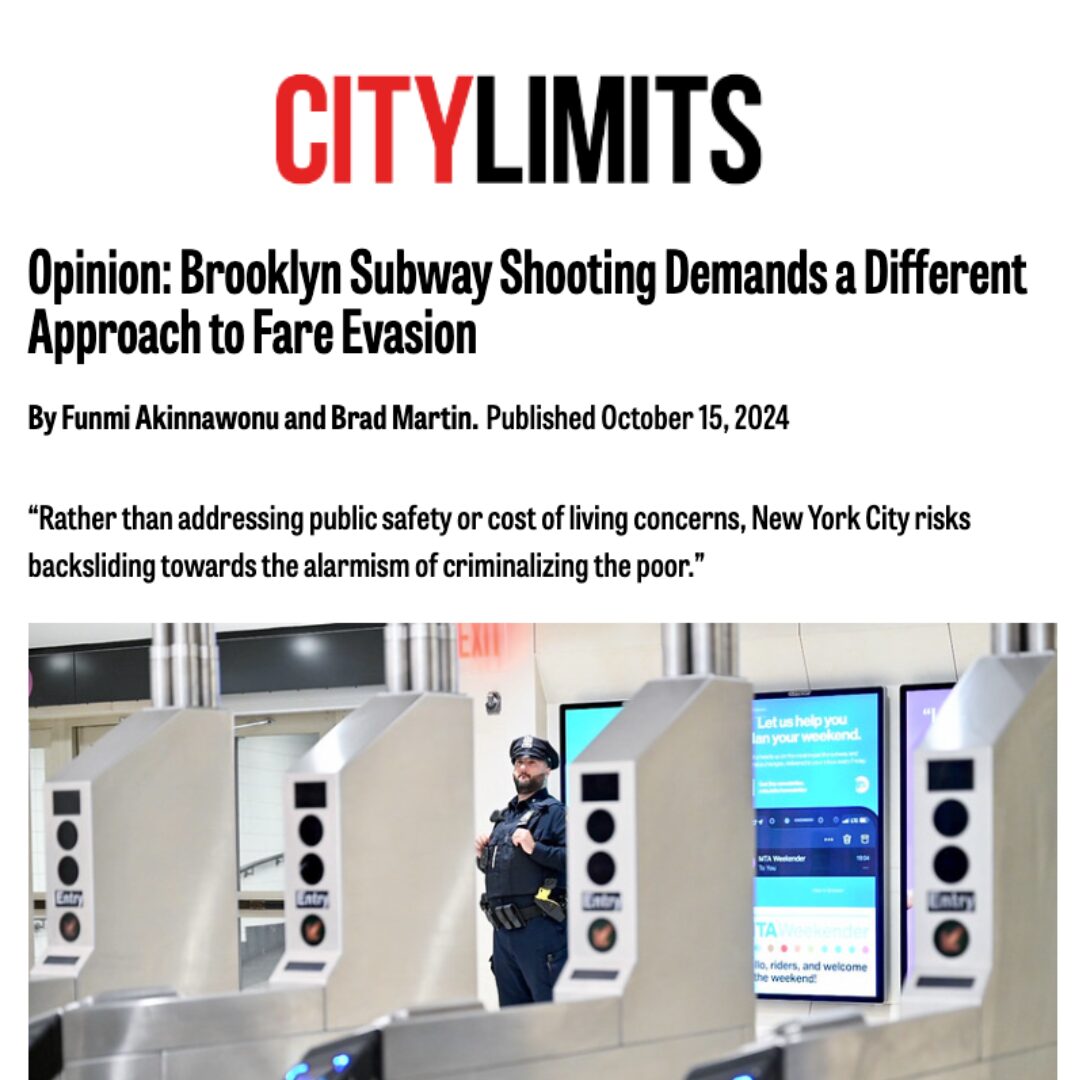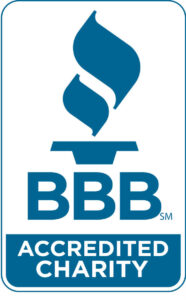Media Contact:
Robin Calleja, robin@sevenletter.com
FOR IMMEDIATE RELEASE
Tuesday, November 19, 2024
New Urban Institute Report on True Cost of Economic Security in America Finds More Than Half of All People in U.S. Lack Economic Security
(New York, NY) — The National True Cost of Living Coalition applauds the Urban Institute’s release today of a cutting-edge report on the true cost of economic security in America. The research, commissioned by the Coalition, introduces a new measure that takes into account a comprehensive set of costs that modern families face alongside the resources available to them. The report finds that more than half of all people in the United States – 52 percent – are financially insecure and not poised to thrive.
Traditional measurements of economic need, including the federal Official Poverty Measure (OPM), focus only on subsistence and deprivation, failing to distinguish between what it costs for families to afford their most basic needs and what it costs for them to save enough for the future – whether it’s to start a family, buy a home, cover tuition or pay for emergency expenses. This new measure captures a fuller picture of a family’s finances by considering both costs and available resources.
“This measure, for the first time, truly helps us understand what every American needs to become economically secure,” says Jennifer Jones Austin, CEO and Executive Director of the Federation of Protestant Welfare Agencies (FPWA) and Co-Chair of the National True Cost of Living Coalition. “Because it goes beyond looking just at basic needs, this new measure fundamentally shifts the discourse to what resources families need to thrive, not just survive. We are closing the gap between traditional economic indicators and lived experiences, and in doing so, providing policymakers with a powerful tool to inform decisions that directly reflect the needs and aspirations of Americans.”
Despite an improving economy, far too many Americans continue to struggle to plan beyond their next paycheck. It is a disconnect brought into stark relief by this month’s election, with voters voicing widespread dissatisfaction about their financial situation even as traditional economic indicators suggested progress. This disconnect demonstrates how unseen and unsupported a significant segment of working families feel. More, it underscores the need to capture a fuller picture of Americans’ economic realities and the value of a methodology that would drive informed conversations about the true cost of economic security.
The Urban Institute’s report shows that 52 percent of Americans fall below what it considers the True Cost of Economic Security Line (TCES), or the household resources needed to meet a family’s monthly expenses while also having enough for their savings.
This finding also aligns with a survey commissioned earlier this year by the National True Cost of Living Coalition, where 65 percent of Americans earning more than 200 percent of the federal poverty level (FPL) – $62,400 for a family of four – indicated they were struggling financially. What the survey and the Urban Institute’s report show is that two things can be true: many Americans can and do feel they are able to make ends meet, but they are also struggling financially.
“This is not a new problem,” says David R. Jones, CEO of the Community Service Society of New York (CSS) and Co-Chair of the National True Cost of Living Coalition. “Low-income and increasingly many middle-class Americans have been struggling financially for decades, but we have not had the right measure to account for it, leaving segments of our population and their struggles largely unseen. What is new — and historic — is our ability to measure the scale of these challenges accurately.”
Importantly, this new measure does not only illustrate what economic security looks like at a national level. It also allows experts and policymakers to look closely at Americans’ experiences in each state and, even further, in individual counties, as well as to explore differences by age, family structure, and race and ethnicity.
“This new method of measuring economic needs is a game changer that broadens and more accurately reflects lived experience and our understanding of need,” said Darrick Hamilton, university professor, the Henry Cohen Professor of Economics and Urban Policy, and founding director of the Institute on Race, Power, and Political Economy at The New School. “It also gives policymakers a new way of thinking about how we define economic security.”
Among the topline findings from the Urban Institute’s report:
- Half of all people in the United States (52 percent) fall below the TCES line. For these people, security isn’t an option. Even if they’re able to make ends meet and pay their bills, they’re unable to save for the future. Most of these people are not poor, but many do struggle financially – in large part because they lack the resources necessary to thrive in today’s economy.
- The chance that an individual falls below the TCES line does not vary substantially between those living in Metro and non-Metro areas (51 vs. 54 percent). Across regions of the country, the TCES rate ranges from a low of 47 percent in the Midwest to a high of 57 percent in the West.
- Low resources rather than excessive costs characterize the places with the highest rates of economic insecurity. In places with the lowest share of people living below the TCES line, people face somewhat similar costs compared to those in places with the highest shares, but they have, on average, relatively high resources.
- Three out of five children live in families with resources falling below the TCES line, as compared with 49 percent of adults ages 18 to 64 and 46 percent of adults ages 65 and older.
- The vast majority of people in single-parent families fall below the TCES line, and half of all people living with two adults (under age 65) and two children, lack the resources to cover their costs.
###
The National True Cost of Living Coalition was founded in 2024 by two leading anti-poverty and advocacy organizations: the Federation of Protestant Welfare Agencies (FPWA) and the Community Service Society of New York (CSS). Concerned about the nation’s inability to both accurately measure what it costs individuals and families to live in America in the 21st century and govern accordingly because existing measures center on acute basic needs and not economic security, they brought together a broad-based group of policy experts and labor, business, philanthropic and community leaders to advocate for the adoption of a national true cost of living measure that would inform policy and programming at all levels of government, and help ensure that economic security is an attainable goal for all Americans.
The Federation of Protestant Welfare Agencies (FPWA) is a leading anti-poverty, social policy and advocacy organization dedicated to strengthening human services organizations and faith institutions and advancing economic opportunity and justice for New Yorkers with low incomes. Since 1922, FPWA has driven groundbreaking policy reforms to better serve those in need. We work to dismantle the structural and systemic barriers that impede economic security and well-being, and we strengthen the capacity of human services agencies and faith organizations so New Yorkers with lower incomes can thrive and live with dignity.
The Community Service Society of New York (CSS) has worked with and for New Yorkers since 1843 to promote economic opportunity and champion an equitable city and state. We power change through a strategic combination of research, services, and advocacy to make New York more livable for people facing economic insecurity. By expanding access to health care, affordable housing, employment, debt assistance, and more, we make a tangible difference in the lives of millions.








